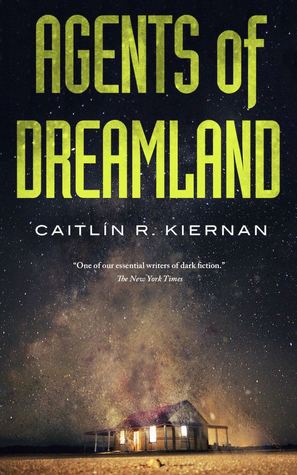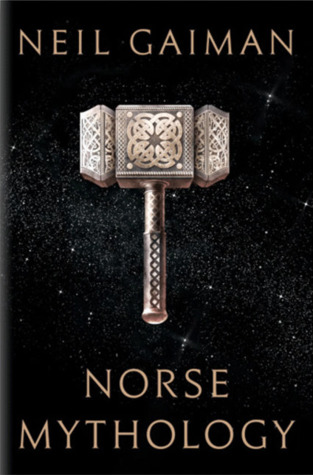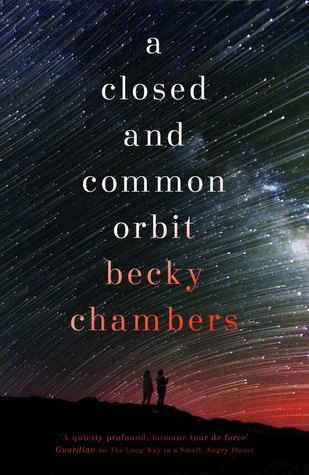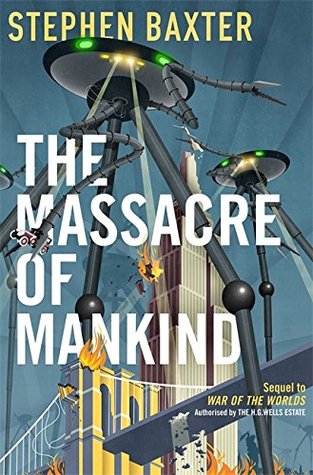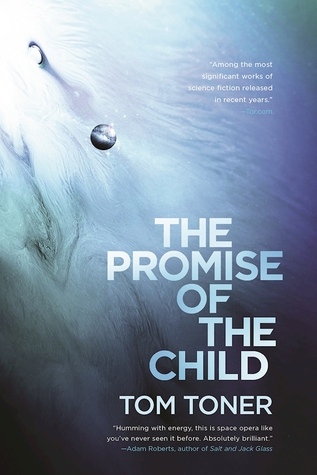Caitlín R. Kiernan’s new novella is an odd beast. Take our universe and turn it a few degrees to strange and this is the world of Agents of Dreamland. It begins with a meeting between two people who are apparently government agents, takes a journey into the mindset of cult members and reaches out into space as a NASA probe falls silent beyond the orbit of Pluto. Kiernan is best known for her lyrical dark fantasy and extraordinarily weird short stories. This novella is somewhere in-between. We begin with the Signalman, a special agent getting off a train in the blistering heat of a 2015 Arizona. He is to meet Immacolata who has information for him. Something strange happened and they need to work out what. She writes as if this is hard-boiled noir. Meanwhile, a typically charismatic-type has founded the Children of the Next Level. This is where we meet Chloe. She is an lost, standing on the roof and reaching for the stars. This particular cult offers transcendence into a better future. This short story alternates in styles between the points of views of the Signalman, Immacolata and Chloe. These are highly descriptive and enigmatic chapters. There are…
Claire North writes high concept fantastical thrillers and her latest The End of the Day is no different. This is a story about death. And Death. And the Harbinger of Death. For it is he, the latter, we follow on this adventure. Charlie is the latest Harbinger and this is his understanding of life and death and the world. In North’s universe, the Four Horseman of the Apocalypse are very real, as are their Harbingers. People know and accept this. When Charlie introduces himself to the characters he meets, they ask him what the job’s like, in a very matter of fact way in some cases. People know but not all understand. We pick the story up not long after Charlie has been trained by the previous Harbinger. The whole operation is run out of an office in Milton Keynes – a functional town perfect for this kind of administration. Charlie, as he tells people throughout the novel, is sent before Death, sometimes as a warning, sometimes a courtesy. He visits an old woman who is the last to speak her language. He has a gift for her. He is then sent to find a professor on the Greenland ice…
Perhaps the most striking thing about Norse Mythology by Neil Gaiman – amazing cover and jacket aside – is that it reads like a Neil Gaiman novel. Indeed, it could possibly fit in as an extended prologue to American Gods. So how is it that an author of comic books, children’s books and the occasional adult novel turn existing myths – from a culture not his own – into something personal and inclusive to all? Norse Mythology is Gaiman’s interpretation of classic Norse myths, inspired by his personal interest. This stems from Gaiman’s love of Jack Kirby and Stan Lee’s Thor which Gaiman read as a child. So -what we have here is a relatively short retelling – and not a re-imagining – in a series of 16 tales from the dawn of creation to Ragnarok – the Norse end-of-times. You can read each tale in isolation, or taken as a complete piece there is a rough structure, as we’re introduced to all the favourites (Odin, Thor, Loki, Frigg, Baldur, Heimdall, giants, dwarfs and all the rest) and how they came to be the characters that some might know and love. Is it a novel? I don’t think so. A…
Everything Belongs to the Future is the debut fiction novella by renowned author and journalist, Laurie Penny. As well as her non-fiction books exploring gender, sexism and capitalism, she writes The Guardian, The Independent, Salon, The New Inquiry and many more. Penny crams a decent amount of plot into not so many pages. We’re almost 100 years hence and the rich can almost literally buy time. Or rather an extension of life from the moment they take the medicine; a kind of ‘Fountain of Youth’ wrapped up in a blue pill. We’re in a divided England. The gaps between the haves and have-nots is wider than ever. Specifically, we’re in Oxford. A group of activists are living in a co-op house and are plotting against those who’ve been ‘fixed’. You see, the scientist inventor of this remarkable technology has fallen in with our perfectly representative house-mates. Nina and Alex, Margo and Fidget are the kind of activists that you’d imagine Penny might know in real life. Scruffy, punky, gender fluid and sexually diverse. Which is a good thing in theory but a little obvious from Penny. I’d have liked a little more stereo-type mould-braking. Inventor Daisy, who is all but…
Great science fiction addresses the concerns of the author’s times and A Closed and Common Orbit by Becky Chambers is no exception. Following on from the acclaimed, and originally self-published, The Long Way to a Small, Angry Planet, this is the story of an AI coming to terms with its identity. The ship in Chambers’ debut was called the Wayfarer and its artificial intelligence was Lovelace. Lovey wakes up in a physical, humanoid body in a world of aliens and varied cultures that she now must negotiate without access to all of the knowledge. Meanwhile, we’re introduced to Jane 23, a 10-year-old who is working in a scrap recovery factory. It’s a horrendous life. With the rest of the Jane’s she lives a harsh existence controlled by the AI Mothers. Jane 23 becomes the human who is helping Lovey adjust to her new life. The novel is told in two time-streams. Pepper – the name Jane 23 has taken for herself – who is a mechanic and streetwise fixer, and her artist friend Blue are looking after the new physical Lovelace. This alternates chapter by chapter with Jane 23’s early life as she escapes from the factory and finds shelter…
They don’t give up, those Martians. Both in fiction and in our cultural consciousness, HG Wells’ invaders from Mars are persistent. Stephen Baxter now carries the torch in The Massacre of Mankind; the official sequel to The War of the Worlds, some 119 years later. Wells’ novel, published in 1898 was actually set in 1907. Baxter brings us at first to 1920. The Martians are long gone, but there are some familiar green flares seen coming from Mars… Meet Julie Elphinstone. A suffragette and journalist who is the sister-in-law to the original novel’s narrator. The story is told from a number of different perspectives, as reported to Julie at some time later than the events of the plot. England has moved on from the original attack, and is almost a dictatorship. The Great War hasn’t happened. The left Martian technology has changed the world. But now, the Martians are coming back and not just 10 cylinders this time. And they’ve learned their lessons about earthly bacteria. Again, the first wave lands in England; north west of London this time. They aren’t here to destroy, but to farm. They bring with them humanoid Martians and also semi-aquatic Venetians (who, I wonder,…
Most novels come with expectations, but when I began reading The Promise of the Child by Tom Toner I had none, expect maybe wondering who the child was going to be and why it had been promised. This is a debut novel by Toner and set in the far future, but when the opening quotes come from Byron and Wilde and the prologue begins in 1319 Prague, my curiosity was piqued. The plot, as it sprawls over 500 pages, is complex and shouldn’t be summarised for the new reader. There is plenty to discover and the best way is simply to read it. The story follows numerous threads and characters through journeys both large and small. The main actor is Lycaste. He lives in the far future, on what is now called the Old World. He has an unrequited love despite being a renowned beauty, but must face greater battles ahead. He is our everyman that we see Toner’s world through. Sotiris Gianakos is 12,000 years old, from Cyprus. His sister has recently died and he is facing grief. This is the story of their coming together, and how they change each other’s lives. So far, so not very science…

